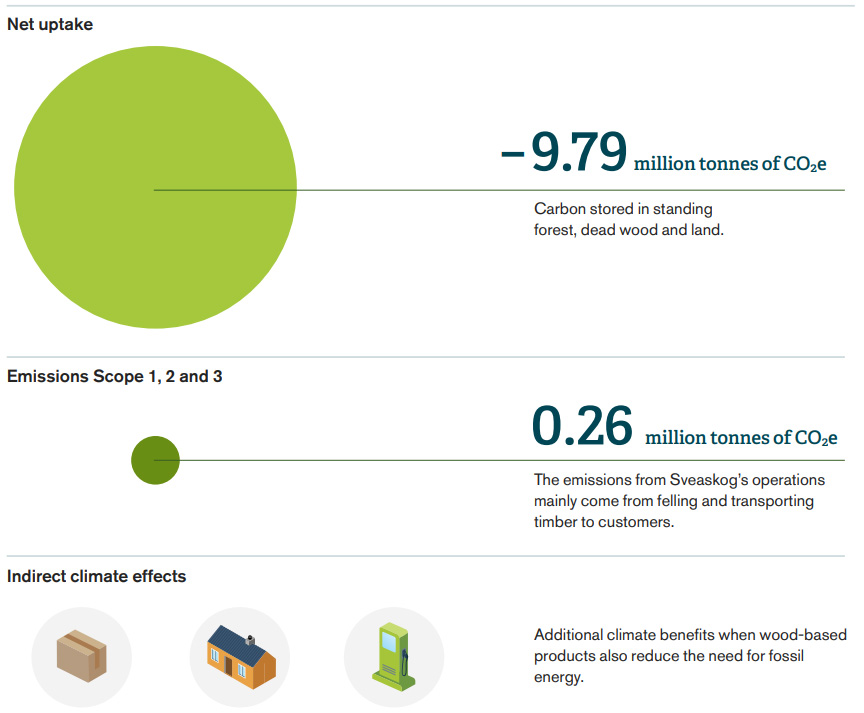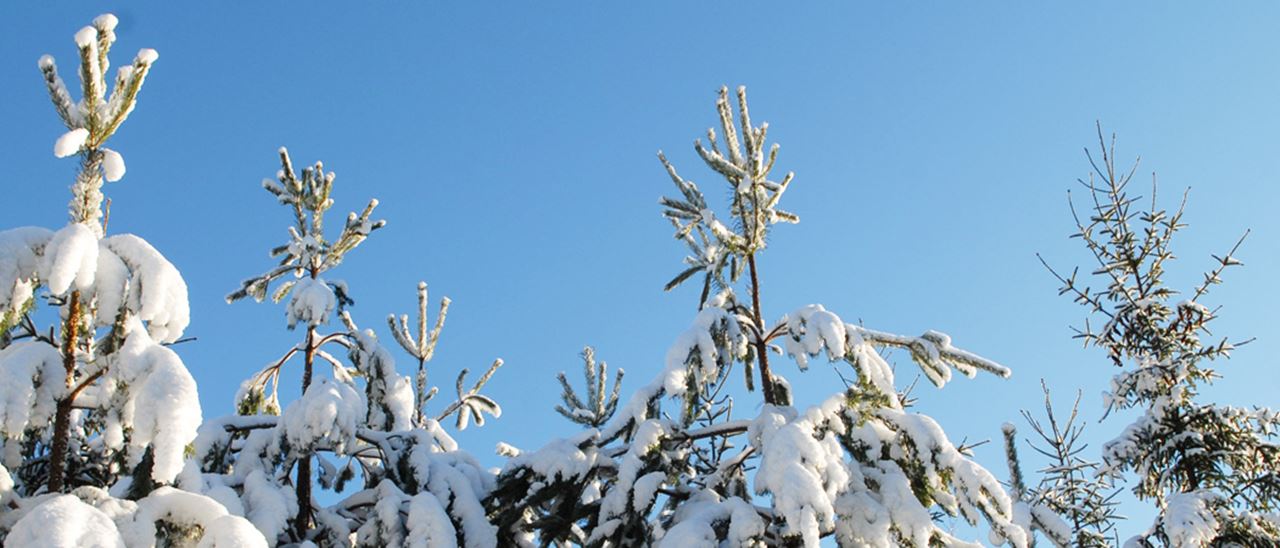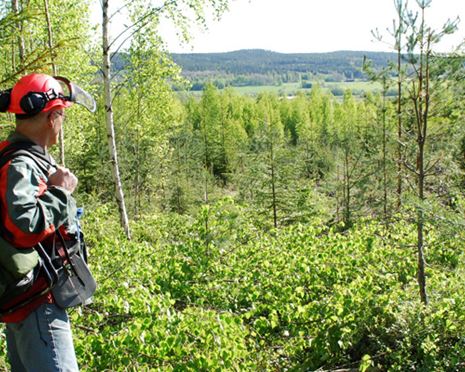Climate impact in forest and value chain
The forest has a significant role in the climate transition as it both absorbs carbon dioxide and binds carbon. In this way, the forest is a key in the work to limit climate change.
Sveaskog’s land holdings contribute to climate benefits through net carbon storage, both directly in the forest and indirectly through long-term products made from timber from Sveaskog’s land. In addition, wood-based products – both long-lived and shortlived – can lead to reduced use of fossil energy and fossil materials, which also helps to reduce the climate impact of society. The calculation of Sveaskog’s carbon capture is based on the annual national reporting that the Swedish Environmental Protection Agency compiles for the UNFCCC in the Swedish National Inventory Report. The national method, which follows the IPCC guidelines for national reporting, is well established and, due to the size and spread of Sveaskog’s holdings, can be considered representative.
During 2023, Sveaskog has made minor adjustments to the method to align this with the upcoming Land Sector and Removals Guidance from Greenhouse Gas Protocol. The living biomass that is harvested and whose carbon thus leaves the forest is also reported by the Swedish Environmental Protection Agency as a “pool” under the name Harvested Wood Products (HWP). On a national level, it is relevant to estimate the temporarily bound carbon in sawn timber using statistics on timber flows and product life, as it has a significant impact on the carbon balance of the atmosphere for a limited period of time. However, in order for a company to claim the carbon that remains bound in sawn timber, greater specific knowledge of end-use and lifetime of the products is required to ensure the durability of the carbon storage. Sveaskog has therefore chosen to exclude this temporary carbon stock from the the calculations of the climate benefit.
The climate benefits that arise when wood-based products are used instead of products that have a higher emission in connection with production, such as cement, are not included in Sveaskog’s operations and are therefore not reported. However, it is important to note that Sveaskog’s production of timber provides a major contribution on the way to a fossil-free society through the company’s customers’ operations and the use of wood-based products and bioenergy. The impact of the benefit depends on how effectively the wood raw material is used in the value chain through sawn timber, fibre products and bioenergy, all of which contribute to reducing the need for fossil energy and fossil-based materials.
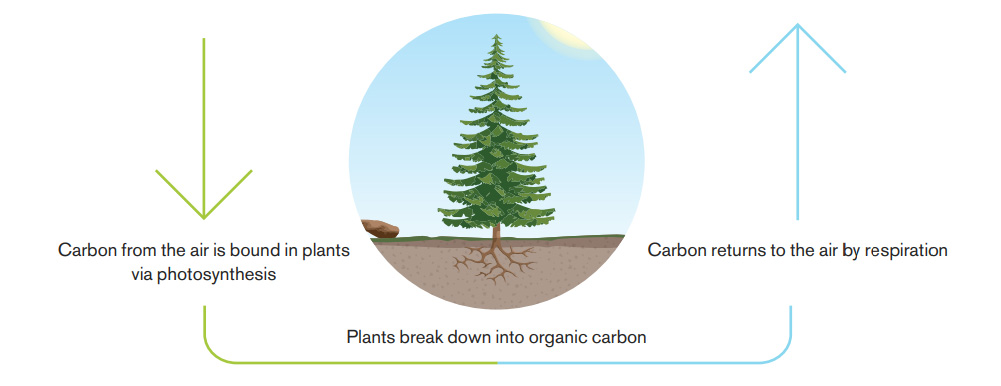
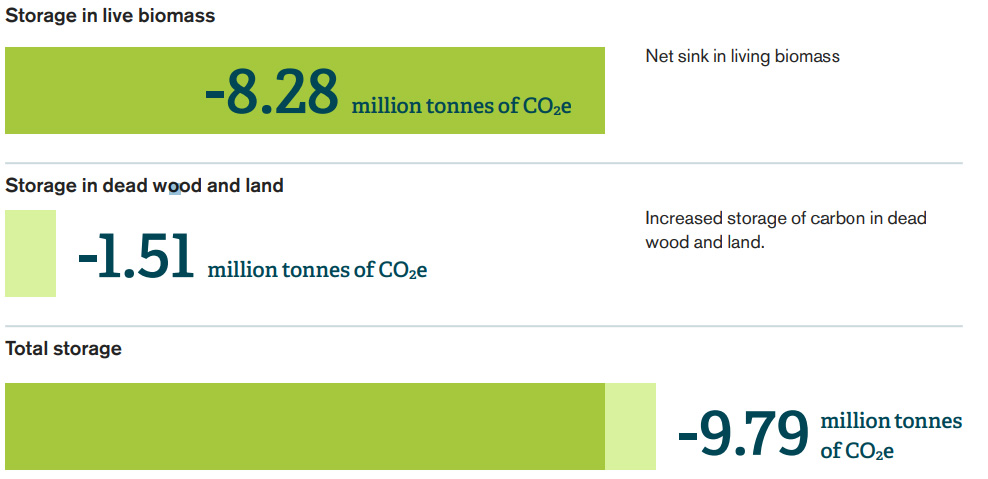
Climate targets
In 2021, Sveaskog decided to set a scientific climate target according to the Science Based Targets initiative (SBTi). SBTi launched a new sector standard for companies in land-intensive sectors in 2022: Forest, Land and Agriculture (FLAG). The new forest sector standard has not yet been established. Sveaskog is ready to set its target, which in accordance with this standard includes both emissions from land use and carbon storage. Climate work is not standing still pending SBTi FLAG; Sveaskog decided in connection with the new strategy to set a climate target of 60 per cent reduced anthropogenic emissions throughout the value chain from 2022 to 2034.
Sveaskog’s emissions
Monitoring greenhouse gas emissions is a continuously ongoing improvement work where knowledge of the current situation is the basis for goals and strategy. Work to improve data quality and increase the level of measured data takes place continuously. In this year’s report, 2022 emissions were adjusted due to the fact that the emission factor for the diesel subject to reduction was corrected. A corresponding change for the base year 2020 was not necessary.
For more information on the emission factor, read our Annual and Sustainability Report.

Results for 2023
In 2023, Sveaskog’s operations generated emissions of 260,175 tonnes of CO2e. This is a decrease of 14 per cent compared to the base year 2020 when emissions amounted to 302,680 tonnes of CO2e. Between 2022 and 2023, total emissions decreased by approximately 1.9 per cent. This is a result of significant reductions in emissions in felling and forest management, nurseries and downstream products sold. At the same time, we have small increases in road contracts, purchased goods and related transport. The share of the basis for the calculations based on measured data increased to 59 per cent in 2023 compared with 40 per cent in the previous year.
Sveaskog’s climate effect in the value chain
Sveaskog’s forests grow annually more than the company harvests. This means that the climate benefit in the form of the stock of bound carbon in standing forest, dead wood and land is constantly increasing.
